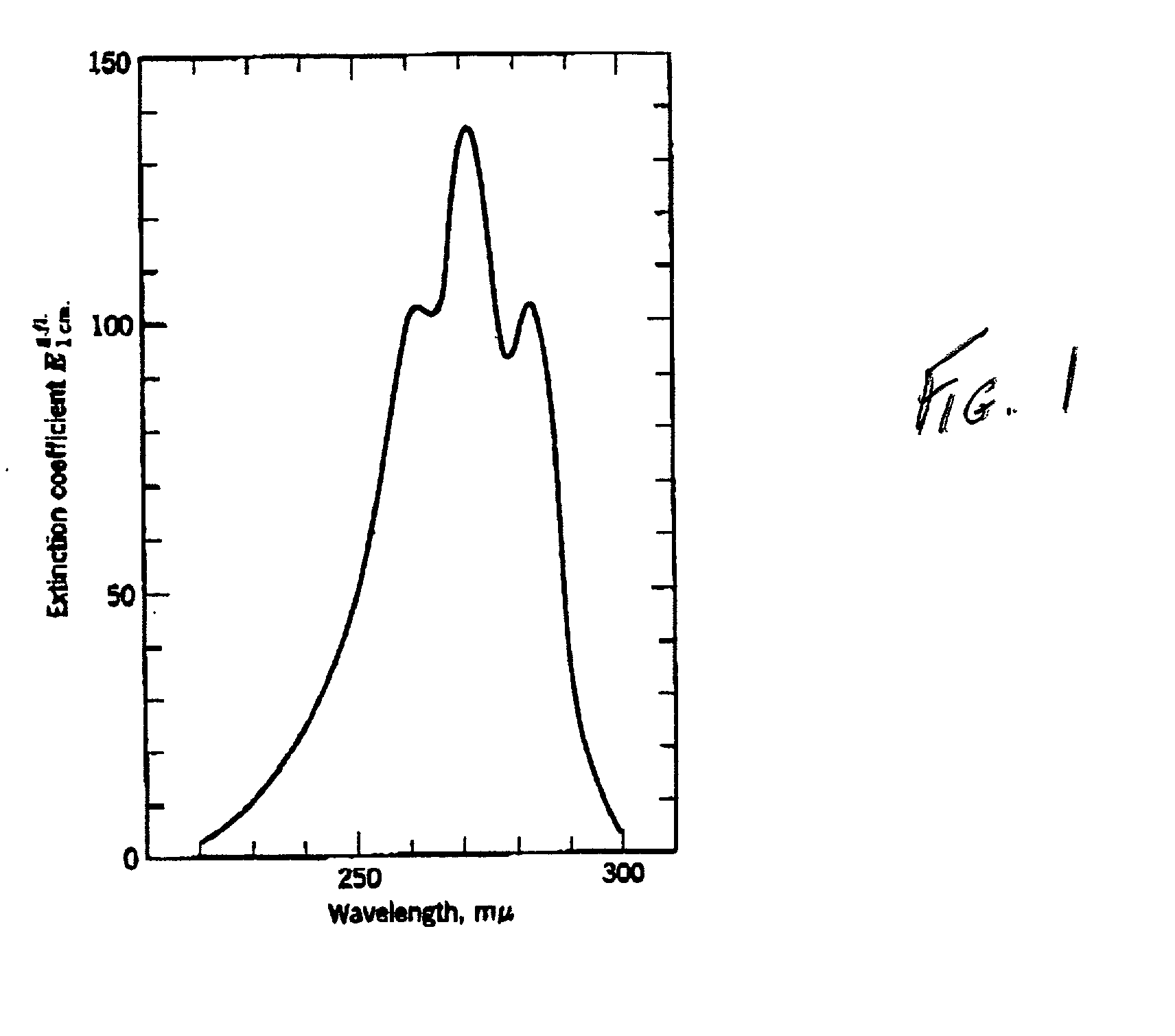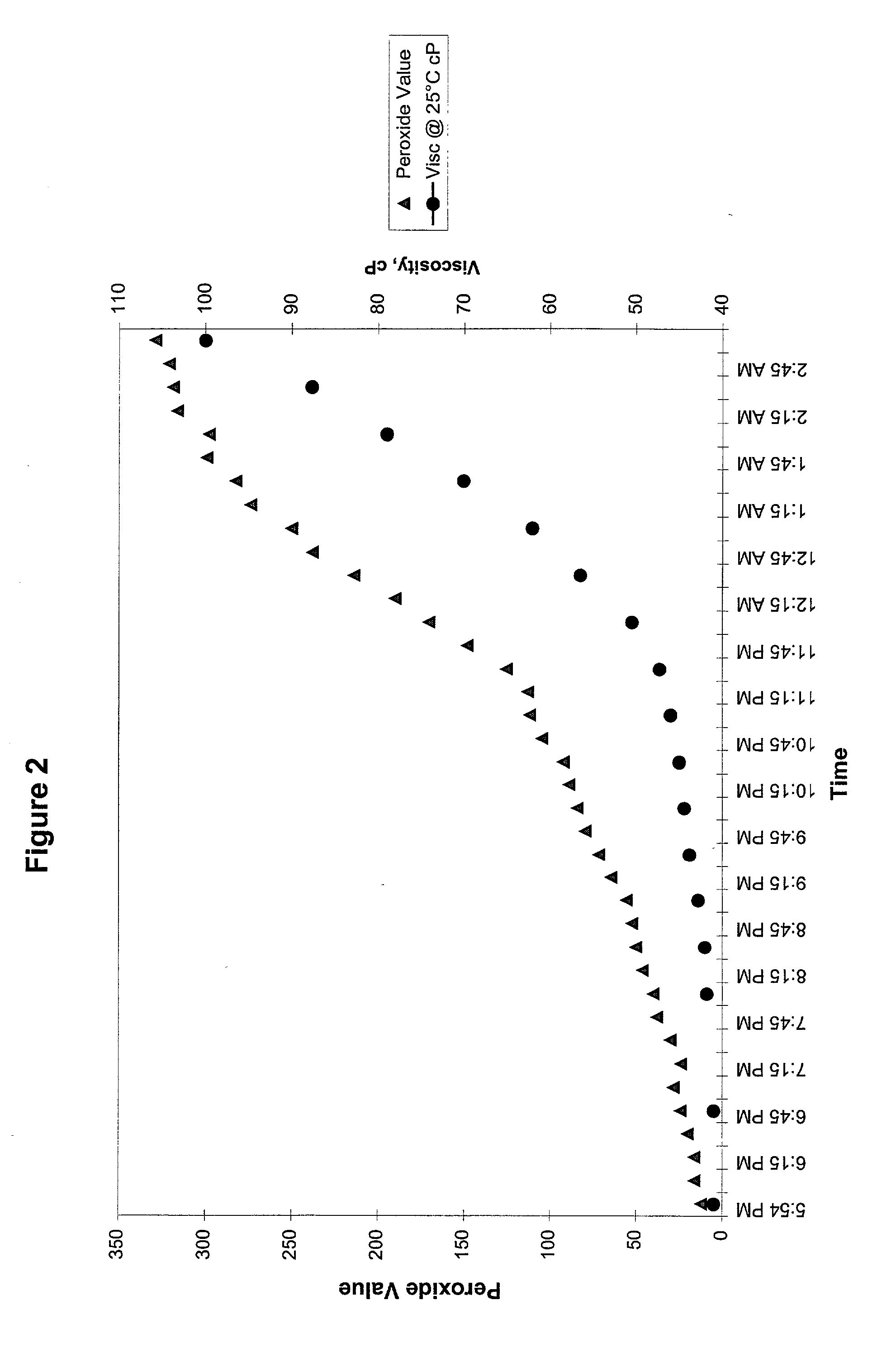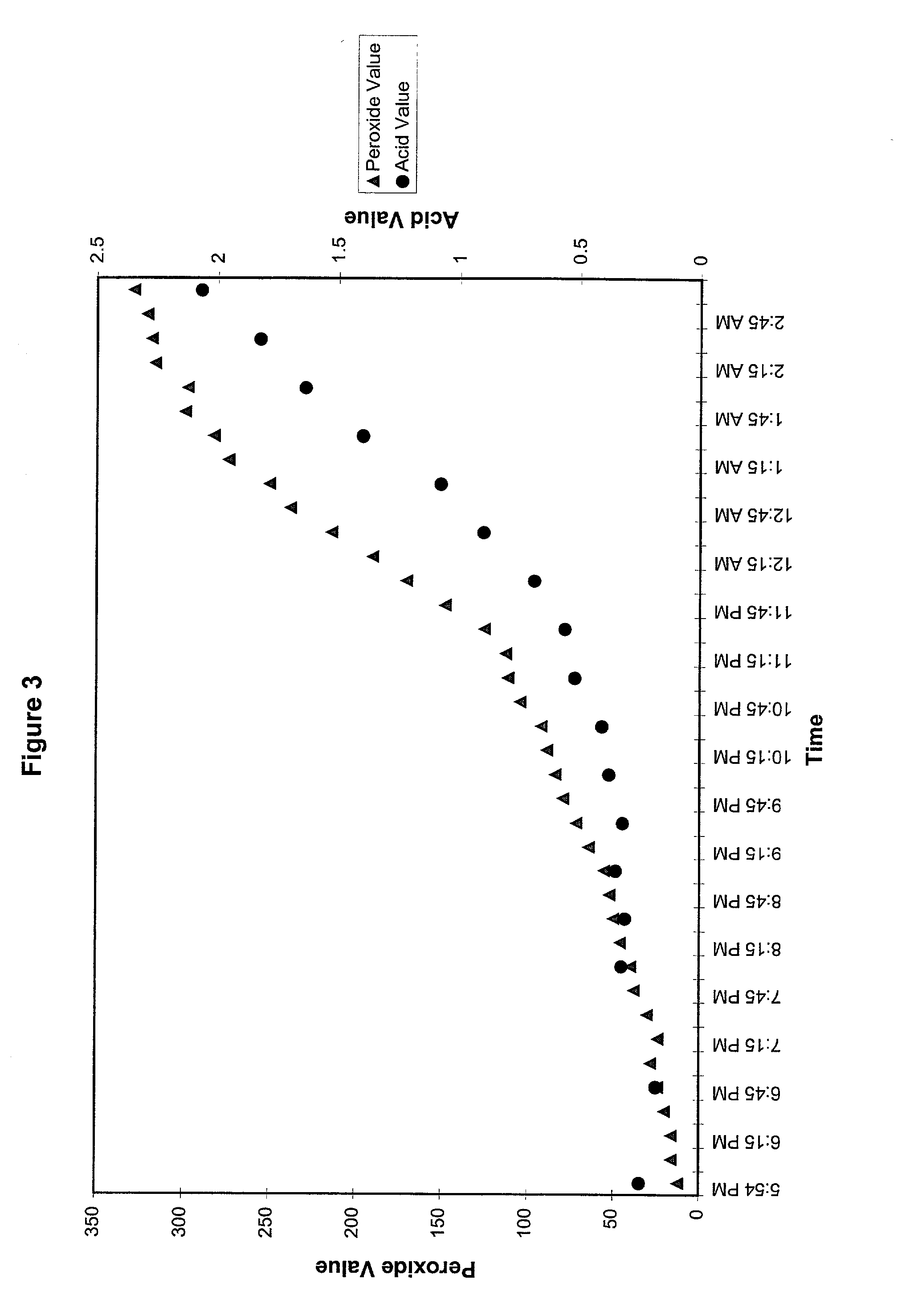Reactive oil compositions and uses thereof
a technology of unsaturated fatty acids and compositions, which is applied in the direction of esterified saccharide compounds, fatty acid chemical modifications, oxidation of fatty acids, etc., can solve the problems of requiring a longer period of time, and achieve the effects of enhancing reactivity, enhancing penetration ability, and lowering viscosity
- Summary
- Abstract
- Description
- Claims
- Application Information
AI Technical Summary
Benefits of technology
Problems solved by technology
Method used
Image
Examples
example 2
Production of High PV LSO Sample
[0061] Linseed oil (45,000 lbs) was introduced into a reaction vessel. The linseed oil was a refined grade of linseed oil that has been processed by alkali refining, bleaching, chilling and filtering. The linseed oil in the reaction vessel was heated to a temperature of 179.degree. F. (85.degree. C.). Once the oil had been heated to this temperature, the air blower was started and operated such that approximately 2,500 cftn of air was passed through the oil. An aliquot removed from the reaction mixture shortly after initiation of the air flow showed that the initial oil had a density of 0.929, a viscosity of 41 cPs (@25.degree. C.), an acid value of 0.29 mgKOH / g, and a peroxide value of 10.6 Meq / Kg. The while the temperature of the reaction mixture reaction mixture was maintained at a temperature of about 181 to 186.degree. F. (circa 83 to 86.degree. C.) for 14.5 hours while air was continuously blown through the oil. At this point, the reaction mixtu...
example 3
Production of a Comparison Tempering Oil
[0062] Linseed oil (45,000 lbs; ASTM raw grade) was introduced into a reaction vessel. The linseed oil in the reaction vessel was heated to a temperature of 240.degree. F. (circa 115.degree. C.). Once the oil had been heated to this temperature, the air blower was started and operated such that approximately 2,500 cfm of air was passed through the oil for about 130 minutes. Once the air flow has been shut off, the reaction product was cooled to 180.degree. F. (82.degree. C.) or below and either pumped into a storage tank or transferred into containers suitable for shipment. The resulting combined aliquot of blown linseed oil had a density of 0.94-0.97, a Gardner-Holt viscosity of D (@25.degree. C.), an acid value of .ltoreq.5 mgKOH / g, an Iodine Value of 150-170, and a saponification value of 195-205 (as determined by AOCS Cd 3-25).
[0063] A tempering oil was produced by blending 95 parts by weight of this blown linseed oil with 5 parts by weigh...
example 4
Oxidation Rates of High PV LSO / Tung Oils Blends
[0064] The relative reactivity of medium and high PV linseed oils blended with varying amounts of tung oil were examined using pressure differential scanning calorimetry ("PDSC") on samples that had been heated to 100.degree. C. under pure oxygen at 500 psi. The protocol was the same as that outlined in ASTM method D6186-98 except that the determination was carried out at 100.degree. C. and peak maximum oxidation time was measured instead of an oxidation induction time (the samples were so reactive that essentially no induction time was observed). The peak oxidation times measured provide an indication of the relative reactivity of the samples and of their cure rates in the presence of an oxygen-containing atmosphere after initial being heated to 100.degree. C. The medium PV linseed oil (PV100 LSO) was a sample of a lightly blown linseed oil with viscosity of less than 50 cPs (@25.degree. C.) and a peroxide value of about 100 Meq / Kg. Th...
PUM
| Property | Measurement | Unit |
|---|---|---|
| Angle | aaaaa | aaaaa |
| Angle | aaaaa | aaaaa |
| Angle | aaaaa | aaaaa |
Abstract
Description
Claims
Application Information
 Login to View More
Login to View More - R&D
- Intellectual Property
- Life Sciences
- Materials
- Tech Scout
- Unparalleled Data Quality
- Higher Quality Content
- 60% Fewer Hallucinations
Browse by: Latest US Patents, China's latest patents, Technical Efficacy Thesaurus, Application Domain, Technology Topic, Popular Technical Reports.
© 2025 PatSnap. All rights reserved.Legal|Privacy policy|Modern Slavery Act Transparency Statement|Sitemap|About US| Contact US: help@patsnap.com



